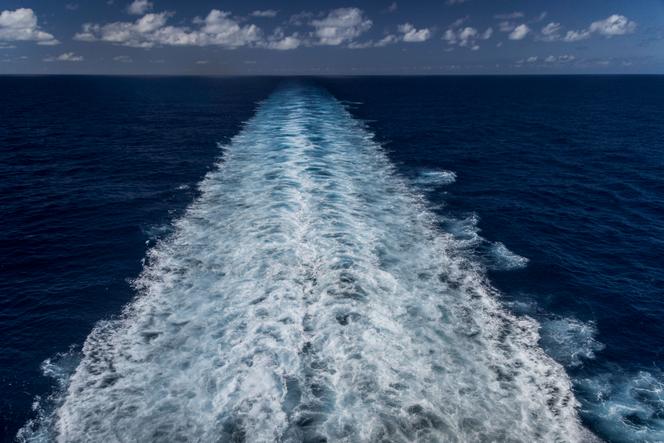


Have pollution cuts on merchant and cruise ships fueled the scorching temperatures recently recorded in the world's oceans? At the beginning of August, Science magazine posed this question in a summary of recent research articles on the climatic impact of new regulations significantly lowering the maximum sulfur content of fuel oil used by ships. This standard, implemented by the International Maritime Organization (IMO) from January 1, 2020, reduces fine particle emissions, for the benefit of human health and ecosystems. However, it has an impact on the formation and reflectiveness of low-altitude clouds, which bounce back some of the sun's radiation.
The mechanism is well known: The presence of sulfur in fuel produces sulfur oxides during combustion, which are converted into fine particles in the atmosphere. "These particles then act as 'condensation nuclei' on which water vapor is deposited," explained climatologist Olivier Boucher, a researcher at the French National Center for Scientific Research (CNRS). "This mechanism contributes to the formation of clouds in which the droplets are smaller and more numerous, and which reflect more solar radiation." The result is a cooler climate.
This issue is attracting attention today because several ocean regions have been experiencing unprecedented heat waves this summer. In particular, surface temperatures in the North Atlantic exceeded their previous record by almost 1°C at the end of July. The main causes of this phenomenon are anthropogenic warming, which is continuing unabated, and a particular meteorological situation, marked by unusually light winds.
"Some actions against air pollution may also be connected to high temperatures in the North Atlantic, Pacific and Antarctic oceans," said a statement from the UK's National Centre for Atmospheric Science, pointing out that changing regulations on ship fuels "could contribute to warmer sea surface temperatures. However, the strength of this connection is very uncertain."
In a study published on July 25 by the journal Atmospheric Chemistry and Physics, Florida State University climatologist Michael Diamond estimated the radiative forcing – the "warming" effect – of new IMO regulations to be around 0.1 watts per square meter (W/m2), averaged over the whole planet. This isn't an insignificant assessment, though well below the 2.7 W/m2 anthropogenic radiative forcing from all human activities since the pre-industrial era, according to the latest report from the Intergovernmental Panel on Climate Change. "The observed effect on cloud formation in sea lanes seems quite real, but it is very difficult, as things stand, to put a precise figure on it," said Boucher. "The assessment of 0.1 W/m2 is based on the highest assumptions."
You have 30.9% of this article left to read. The rest is for subscribers only.
